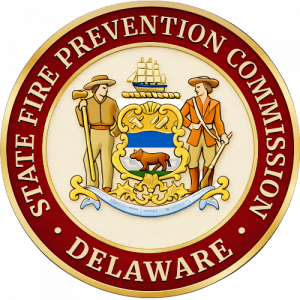
Red Clay Creek/DNREC photo
[
versión en español]
[
vèsyon kreyòl ayisyen]
Department Secretary Highlights Need for Public Awareness
The Department of Natural Resources and Environmental Control released findings today from DNREC’s comprehensive study on PFAS (per- and polyfluoroalkyl substances) in surface waters across Delaware. The study, conducted in the fall of 2022, involved the collection and analysis of 83 surface water samples from 33 watersheds throughout the state. The study summarizes and presents analytical results used to evaluate existing concentrations of PFAS and prioritize future actions to address areas of the state most impacted by what have become known as “forever chemicals.”
PFAS, a group of man-made chemicals found in various industrial and consumer products, are persistent in the environment and human body. DNREC’s research aims to inform and direct resources towards identifying, controlling and remediating the sources of these contaminants. Tracking and eliminating these chemicals’ sources to the environment will have a positive impact on water quality and in maintaining healthy communities in Delaware.
“Understanding the extent of PFAS contamination in Delaware’s surface waters is a critical step toward mitigating the risks associated with these persistent chemicals,” said DNREC Secretary Shawn M. Garvin. “This newest study also underscores the need for public knowledge about the vast and complex issue of PFAS contamination. By providing research and information, DNREC empowers Delaware residents to make informed decisions to protect their health and the health of their families.”
The study was conducted by the DNREC Watershed Approach to Toxics Assessment and Restoration (WATAR) team, comprising experts from several DNREC divisions, including Watershed Stewardship, Waste and Hazardous Substances, and Water. The data summary presented by DNREC WATAR team includes graphical representations that highlight variations in PFAS concentrations and family group distributions. It reveals the presence of PFAS at varying concentrations in every sample collected. This baseline information will help state scientists track surface water PFAS concentration trends in the future.
“Once the data were plotted and viewed together, several obvious anomalies stood out, either due to the magnitude of the concentrations, or to the family group fingerprints,” said John Cargill, hydrologist for the DNREC Division of Watershed Stewardship.
The data summary report identifies the following water bodies/watersheds as deserving of prioritized follow-up actions:
- Red Clay Creek (New Castle County)
- Hershey Run (New Castle County)
- Long Branch (New Castle County)
- Shellpot Creek (New Castle County)
- Little River (Kent County)
- St. Jones River (Kent County)
“DNREC is already taking actions to determine the extent of potential impacts and to identify potential sources,” said WATAR team hydrologist Todd Keyser. “Additional studies are underway in the northern part of the state and in the Little River watershed, among others.”
Follow-up actions in other watersheds will include resampling to verify the data collected during this study, and review of any data collected nearby during other DNREC studies. If elevated concentrations of PFAS are confirmed, then additional samples will be collected within the affected water bodies, general site areas, or within the broader watersheds.
Additional Delaware-specific PFAS related information, including summaries of ongoing studies and links to completed studies, can be found at de.gov/pfas. An abundance of technical information about PFAS can be found on the Interstate Technology and Regulatory Council (ITRC) website. Additional information about the U.S. Environmental Protection Agency action related to PFAS can be found on EPA’s website. Additional information about DNREC’s WATAR program can be found at de.gov/watar.
About DNREC
The Delaware Department of Natural Resources and Environmental Control protects and manages the state’s natural resources, protects public health, provides outdoor recreational opportunities and educates Delawareans about the environment. The DNREC Division of Watershed Stewardship develops and implements innovative watershed assessment, monitoring and implementation activities. The DNREC Division of Waste and Hazardous Substances ensures Delaware’s wastes are managed to protect human life, health, safety and the environment. For more information, visit the website and connect with @DelawareDNREC on Facebook, Instagram, X (formerly known as Twitter) or LinkedIn.
Media Contacts: Nikki Lavoie, nikki.lavoie@delaware.gov; Michael Globetti, michael.globetti@delaware.gov
###














































































